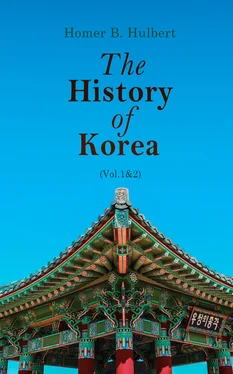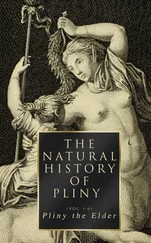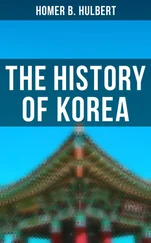The tribe of Ok-jŭ was finally absorbed in Ko-gu-ryŭ in the fourth year of King T’ă-jo Wang.
The Eum-nu tribe did not belong to Korea proper but as its territory was adjacent to Korea a word may not be out of place. It was originally called Suk-sin. It was north of Ok-jŭ and stretched from the Tu-man river away north to the vicinity of the Amur. Its most famous mountain was Pul-ham San, It is said to have been a thousand li to the north-east of Pu-yŭ. The country was mountainous and there were no cart roads. The various cereals were grown, as well as hemp.
The native account of the people of Eum-nu is quite droll and can hardly be accepted as credible. It tells us that the people lived in the trees in summer and in holes in the ground in winter. The higher a man’s rank the deeper he was allowed to dig. The deepest holes were “nine rafters deep.” Pigs were much in evidence. The flesh was eaten and the skins were worn. In winter the people smeared themselves an inch thick with grease. In summer they wore only a breach-cloth. They were extremely filthy. In the center of each of these winter excavations was a common cesspool about which everything else was clustered. The extraordinary statement is made that these people picked up pieces of meat with their toes and ate them. They sat on frozen meat to thaw it out. There was no king, but a sort of hereditary chieftainship prevailed. If a man desired to marry he placed a feather in the hair of the damsel of his choice and if she accepted him she simply followed him home. Women did not marry twice, but before marriage the extreme of latitude was allowed. Young men were more respected than old men. They buried their dead, placing a number of slaughtered pigs beside the dead that he might have something to eat in the land beyond the grave. The people were fierce and cruel, and even though a parent died they did not weep. Death was the penalty for small as well as great offences. They had no form of writing and treaties were made only by word of mouth. In the days of Emperor Yüan-ti of the Eastern Tsin dynasty, an envoy from this tribe was seen in the Capital of China.
We have described the tribes of eastern Korea. A word now about the western part of the peninsula. All that portion of Korea lying between the Han and Yalu rivers constituted what was known as Nang-nang and included the present provinces of P‘yŭng-an and Whang-hă together with a portion of Kyŭng-geui. It was originally the name of a single tribe whose position will probably never be exactly known; but it was of such importance that when China divided northern Korea into four provinces she gave this name of Nang-nang to all that portion lying, as we have said, between the Han and the Yalu. The only accounts of these people are given under the head of the Kingdom of Ko-gu-ryŭ which we shall consider later. But between Nang-nang and the extreme eastern tribes of Ok-jŭ there was a large tract of country including the eastern part of the present province of P’yŭng-anP’yŭng-an and the western part of Ham-gyŭng. This was called Hyŭn-do, and the Chinese gave this name to the whole north-eastern part of Korea. No separate accounts of Hyŭn-do seem to be now available.
Before passing to the account of the founding of the three great kingdoms of Sil-la, Păk-je and Ko-gu-ryŭ, we must give a passing glance at one or two of the great border tribes of the north-west. They were not Koreans but exercised such influence upon the life of Korea that they deserve passing notice.
In that vast tract of territory now known as Manchuria there existed, at the time of Christ, a group of wild tribes known under the common name Mal-gal. The group was composed of seven separate tribes, named respectively—Songmal, Păk-tol, An-gŭ-gol, Pul-lal, Ho-sil, Heuk-su (known also as the Mul-gil)Mul-gil) and the Păk-san. Between these tribes there was probably some strong affinity, although this is argued only from the generic name Mal-gal which was usually appended to their separate names, and the fact that Mal-gal is commonly spoken of as one. The location of this group of tribes is determined by the statement (1) that it was north of Ko-gu-ryŭ and (2) that to the east of it was a tribe anciently called the Suk-sin (the same as the Eum-nu,) and (3) that it was five thousand li from Nak-yang the capital of China. We are also told that in it was the great river Sog-mal which was three li wide referring it would seem to the Amur River. These tribes, though members of one family, were constantly fighting each other and their neighbors and the ancient records say that of all the wild tribes of the east the Mal-gal were the most feared by their neighbors. But of all the Mal-gal tribes the Heuk-su were the fiercest and most warlike. They lived by hunting and fishing. The title of their chiefs was Tă-mak-pul-man-lol-guk. The people honored their chiefs and stood in great fear of them. It is said that they would not attend to the duties of nature on a mountain, considering, it would seem, that there is something sacred about a mountain. They lived in excavations in the sides of earth banks, covering them with a rough thatch. The entrance was from above. Horses were used but there were no other domestic animals except pigs. Their rude carts were pushed by men and their plows were dragged by the same. They raised a little millet and barley, and cultivated nine kinds of vegetables. The water there, was brackish owing to the presence of a certain kind of tree the bark of whose roots tinged the water like an infusion. They made wine by chewing grain and then allowing it to ferment. This was very intoxicating. For the marriage ceremony the bride wore a hempen skirt and the groom a pig skin with a tiger skin over his head. Both bride and groom washed the face and hands in urine. They were the filthiest of all the wild tribes. They were expert archers, their bows being made of horn, and the arrows were twenty-three inches long. In summer a poison was prepared in which the arrow heads were dipped. A wound from one of these was almost instantly fatal. The almost incredible statement is made in the native accounts that the dead bodies of this people were not interred but were used in baiting traps for wild animals.
Besides the Mal-gal tribes there were two others of considerable note, namely the Pal-hă and the Kŭ-ran of which special mention is not here necessary, though their names will appear occasionally in the following pages. They lived somewhere along the northern borders of Korea, within striking distance. The last border tribe that we shall mention is the Yŭ-jin whose history is closely interwoven with that of Ko-gu-ryŭ. They were the direct descendants, or at least close relatives, of the Eum-nu people. They were said to have been the very lowest and weakest of all the wild tribes, in fact a mongrel tribe, made up of the offscourings of all the others. They are briefly described by the statement that if they took up a handful of water it instantly turned black. They were good archers and were skilful at mimicing the deer for the purpose of decoying it. They ate deer flesh raw. A favorite form of amusement was to make tame deer intoxicated with wine and watch their antics. Pigs, cattle and donkeys abounded. They used cattle for burden and the hides served for covering. The houses were roofed with bark. Fine horses were raised by them. It was in this tribe that the great conquerer of China, A-gol-t’a, arose, who paved the way for the founding of the great Kin dynasty a thousand years or more after the beginning of our era.
Table of Contents
Southern Korean. … Ki-jun’s arrival … differences which he found … three groups. … Ma-han … position … peculiarities … characteristics … worship … tatooing … numbers. … Chin-han. … Chinese immigrationimmigration … customs. … Pyön-han … position … habits … the philological argument … southern origin. … Ki-jun and his descendants.
Читать дальше












